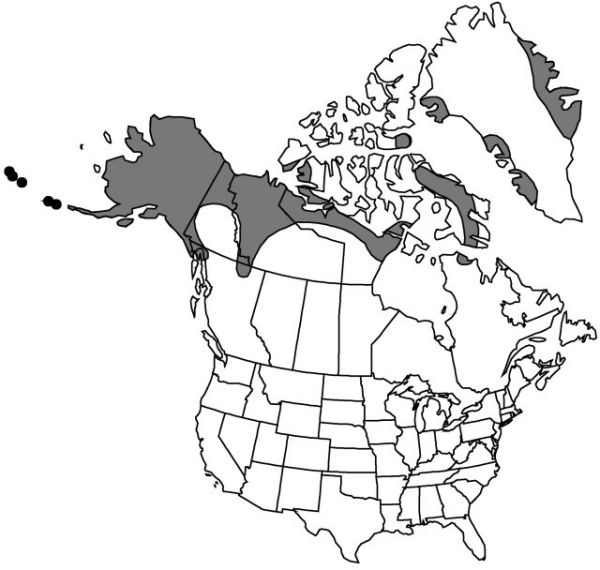Tofieldia coccinea
in J. Franklin et al., Narr. Journey Polar Sea, 736. 1823.
Stems 2–20 cm. Leaf blades to 7.5 cm × 3.5 mm. Inflorescences open to dense, sometimes spikelike, 5–30-flowered, 0.5–2.5 cm; proximal bracts conspicuous, ovate, margins entire, distal bracts reduced or absent; bracteoles forming epicalyx, deeply 3-lobed, lobes often appearing distinct, ovate, sometimes weakly 3-fid with 2 small lateral lobes. Flowers: tepals greenish, tinged pinkish cream to deep crimson, 2–2.5 mm, inner tepals slightly longer than outer; stamens ± equaling or slightly longer than tepals; filaments not strongly flattened or dilated basally; ovary ellipsoid; styles 0.3–0.8 mm; pedicel 0–3 mm, often becoming arcuate in fruit. Capsules broadly obovoid to globose, 2–2.3 mm. Seeds ca. 1 mm. 2n = 30.
Phenology: Flowering summer.
Habitat: Moist to dry open areas, generally calcareous
Elevation: 0–1500 m
Distribution

Greenland, B.C., N.W.T., Nunavut, Que., Yukon, Alaska, n Asia.
Discussion
See under 3. Tofieldia pusilla regarding hybridization with that species.
Selected References
None.